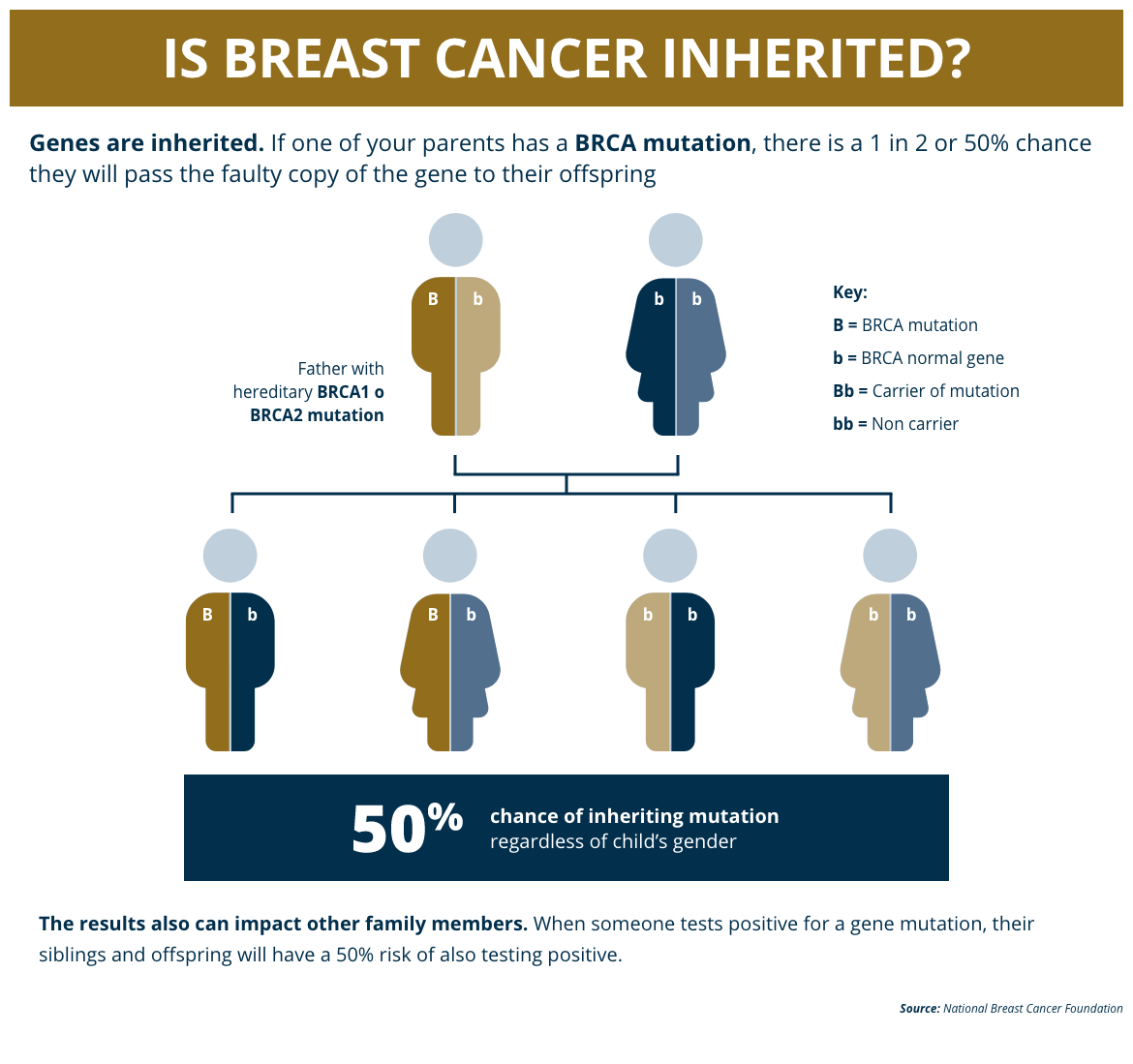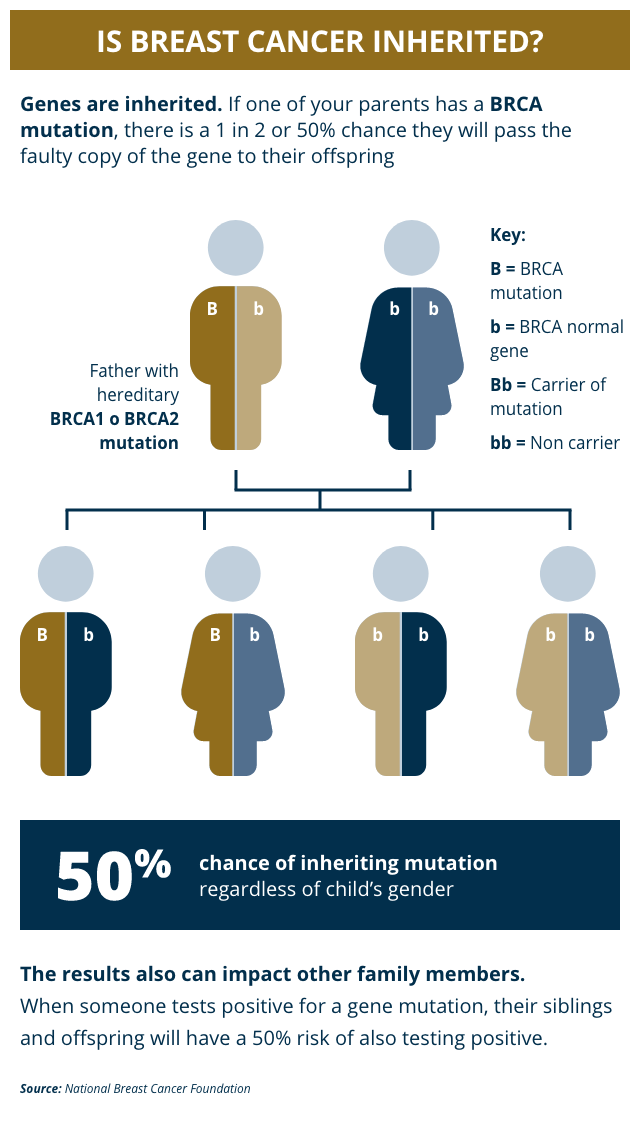4 Oct 2023
Genetic Testing for Breast Cancer: Who Should Consider a BRCA Test?
Estimated read time: 4 minutes
Each cell of our body contains approximately 30,000 genes that make up a kind of book about our lives. These genes contain information that determines the physical characteristics we inherit from our parents along with many other traits, including our predisposition to certain diseases. The genes known as BRCA1 and BRCA2 can reveal a person’s risk of developing breast cancer.
These two genes, short for “breast cancer 1” and breast cancer 2,” are not always bad and do not always cause breast cancer; in fact, they often help prevent the progression of tumors that lead to the disease by repairing damaged DNA. However, some people have mutations in the BRCA1 or BRCA2 genes that put them at a higher risk.
It is estimated that only 0.25% of the general population, one in every 400 people, carries a BRCA1 or BRCA2 gene mutation. But those who do carry it have an increased risk of developing breast cancer. Between 55% and 65% of women with a BRCA1 gene mutation and 45% of women with a BRCA2 gene mutation will develop breast cancer before age 70.
Being aware of one’s risk levels can be life-saving, and genetic tests currently available allow us to identify gene mutations. Since the percentage of people who carry these mutations is so low, experts recommend the test for those whose medical history shows:
- A family history of breast cancer diagnosed before age 50
- A family history of breast cancer in men
- Several relatives from the same part of the family who have had breast cancer (especially immediate family members, such as one’s mother or sister)
- Multiple cases of breast cancer in the family
- A family member with both breast and ovarian cancer
- A family history of ovarian cancer, especially in immediate family members
- Young people in the same part of the family with prostate, pancreatic, ovarian, or skin cancer
- Having Ashkenazi Jewish ancestry
All of these characteristics may indicate the presence of a gene mutation that is passed down or inherited across generations.
Women with a BRCA1 or BRCA2 mutation who survive breast cancer with treatment appear to have a higher than average probability of developing cancer again. This is known as cancer recurrence. Cancers linked to a BRCA1 mutation are also more likely to be triple-negative breast cancer, which can be more aggressive and difficult to treat.
Genetic testing to determine the risk of breast cancer can be done on a simple blood or saliva sample. However, it is critical to undergo testing with the guidance of a genetic counselor in order to evaluate results and next steps.
Other Important Tests
Although our genetic inheritance draws an imaginary line between people who carry mutations and are at higher risk and those who do not, one key piece of cancer prevention applies to everyone: the importance of routine mammograms.
Since the 1990s, dozens of scientific studies have confirmed the value of mammograms in the detection of breast cancer. If done regularly and as directed by a doctor, mammograms can detect cancer in its early stages, often making it easier to treat.
In Latin America and the Caribbean, more than 210,000 new cases of breast cancer are diagnosed and 68,000 people die from the disease each year. Many of these cases could be detected early, when the chance of treating them successfully is higher.
Historically, however, Latina women tend to postpone preventive screenings or face a number of barriers to access them, from economic to cultural. They may think that the absence of pain or discomfort or any lumps means that there is no reason to go to the doctor. As a result, many end up getting a mammogram when the disease is already at an advanced stage and more difficult to treat.
The early detection of any abnormality can mark the difference between life and death. But in the case of breast cancer, early detection could mean a 100% survival rate.
After lengthy discussions, the United States Preventive Services Task Force, an independent panel of experts that discusses pharmacological and therapeutic approaches for disease prevention, determined in mid-2023 that mammograms should be a routine test for women between the ages of 50 and 74 who have no known additional risk factors.
The decision to start getting mammograms sooner depends on each individual and should be discussed with a specialist. Those who carry any of the genetic mutations that lead to a higher cancer risk should get mammograms regularly starting at a young age.
Remember, always consult with your physician or health care professional to determine the best options for your body and health and to answer any questions you may have regarding any medical matter.




